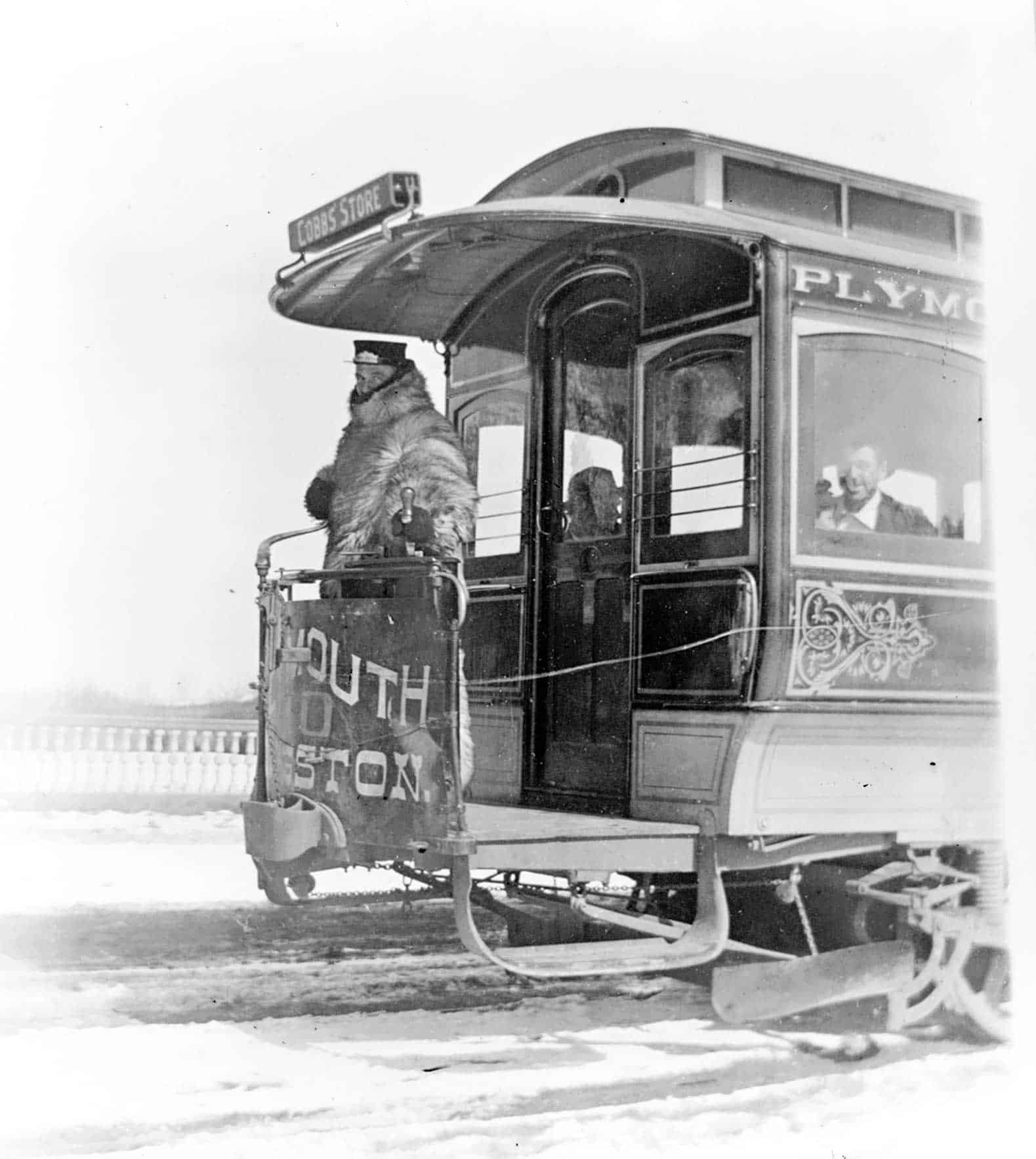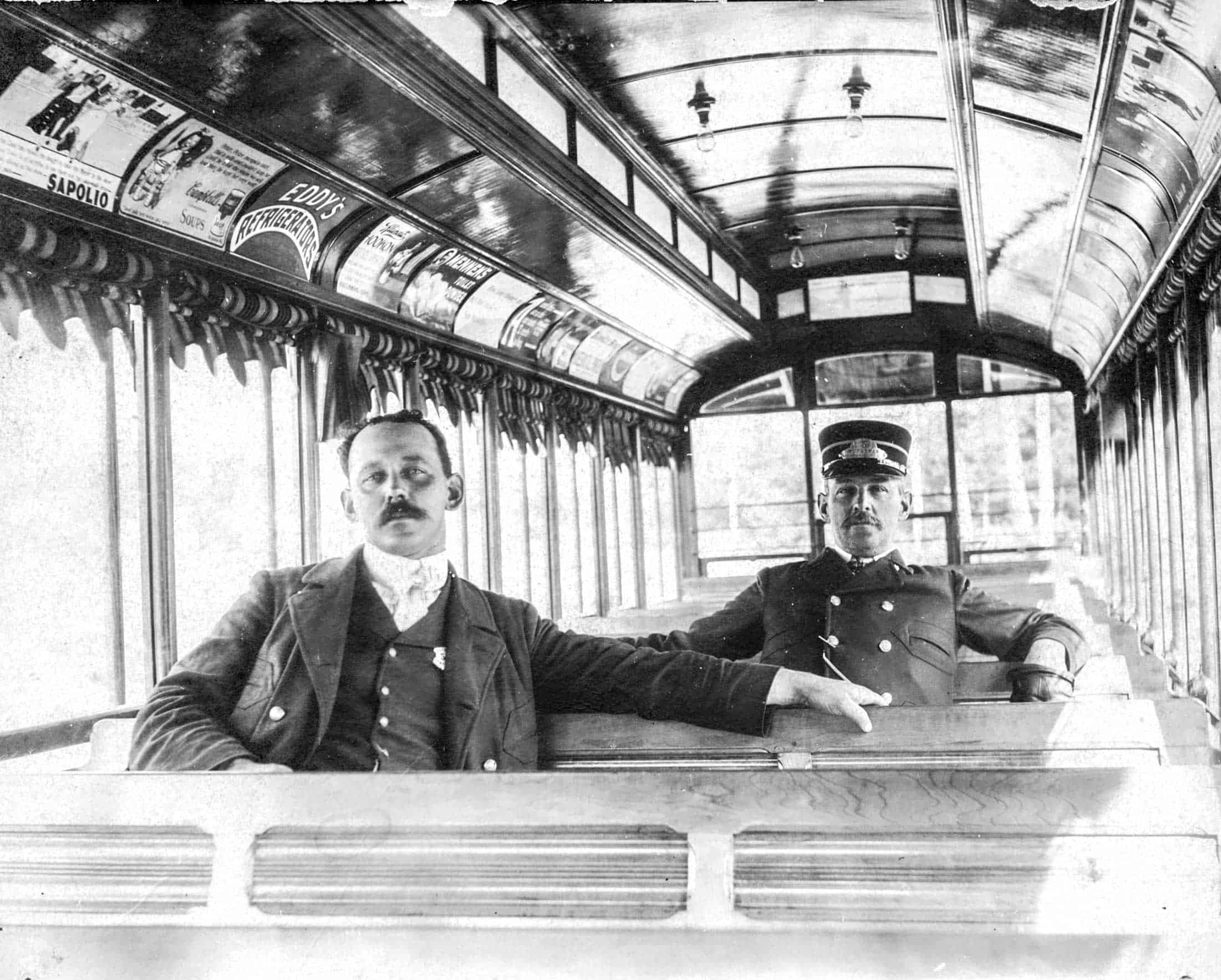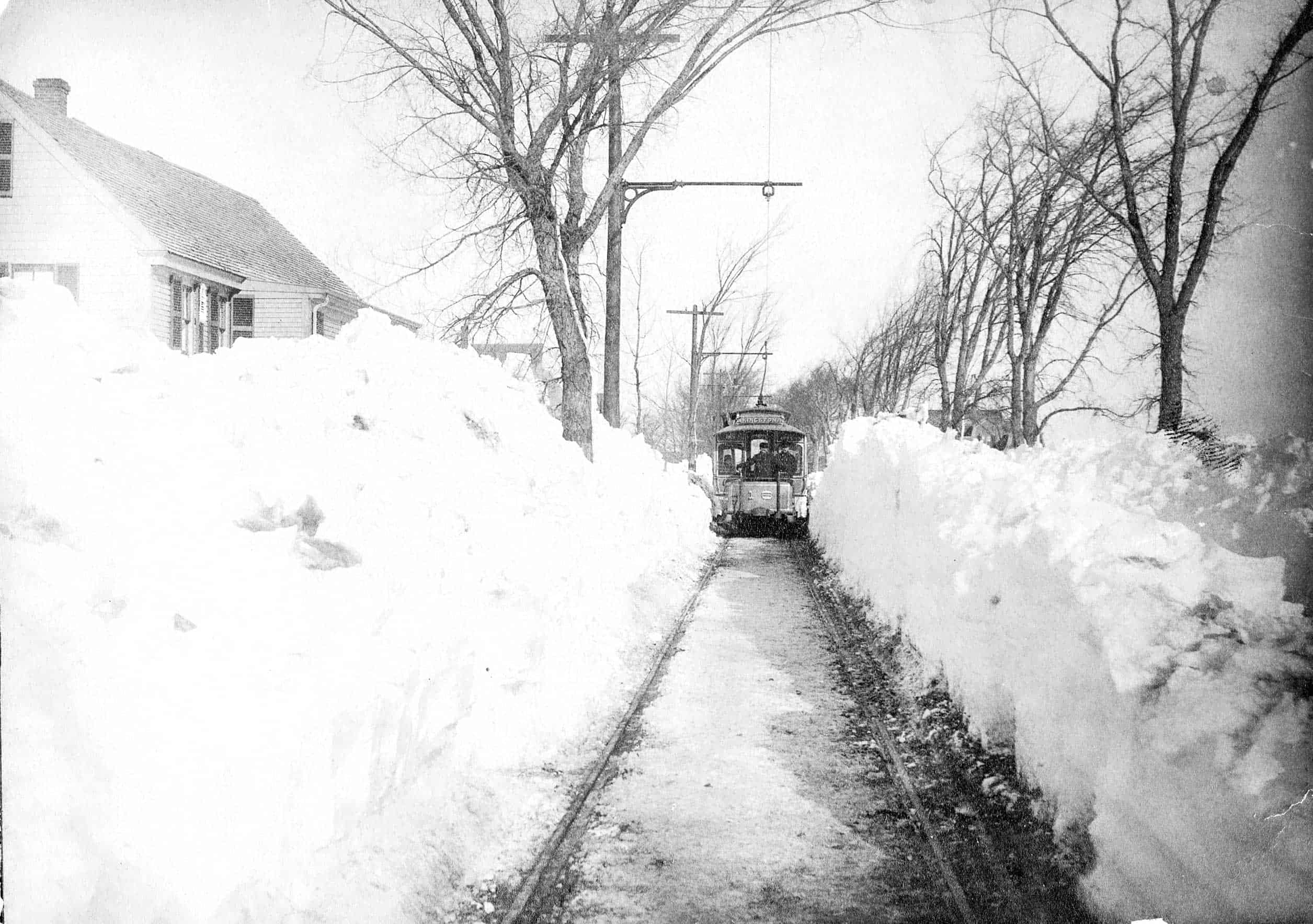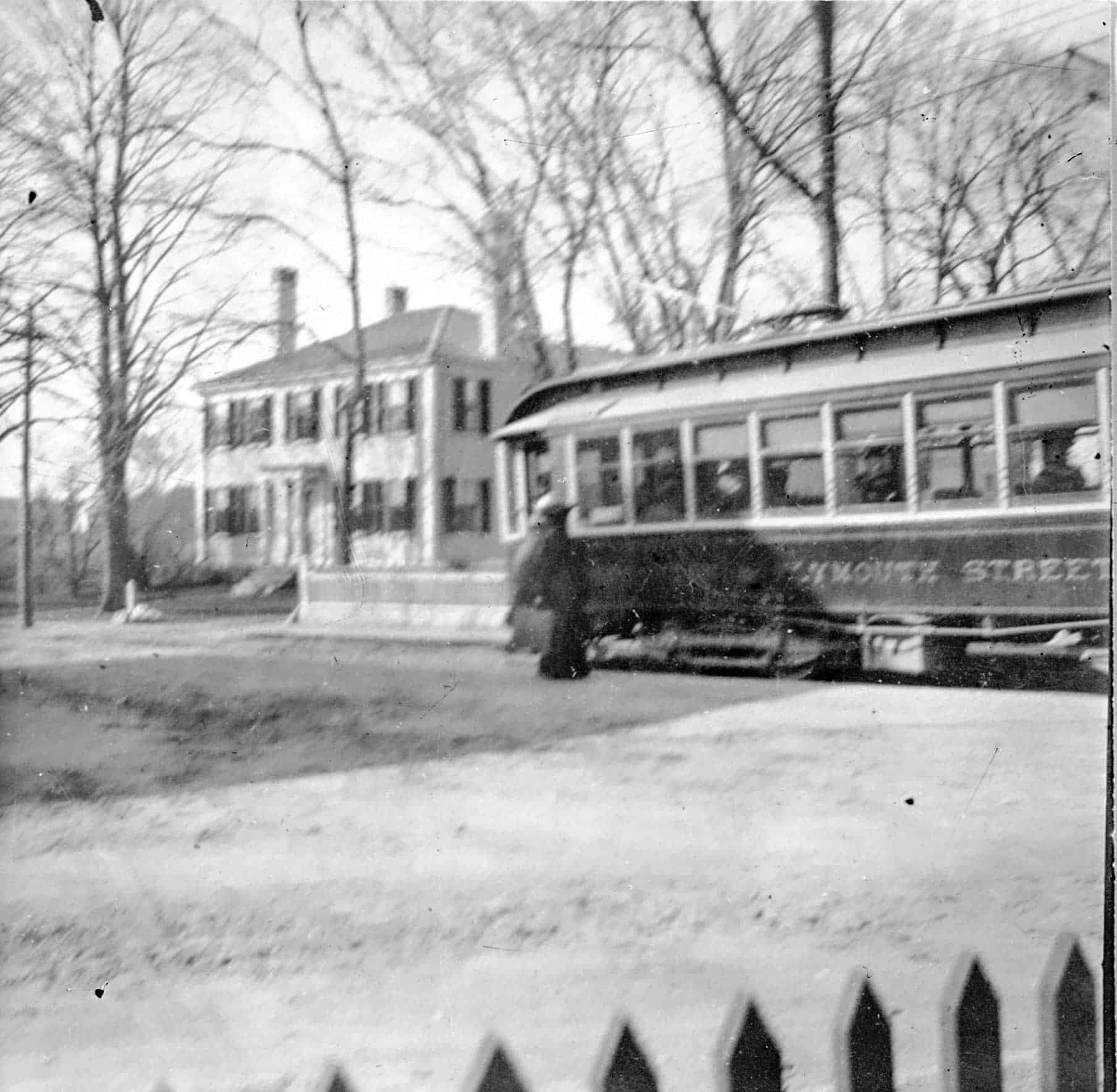130 years of trolleys and buses on the South Shore
Written by david kindy
Historical imagery courtesy of
The Kingston Public Library Local History Collections
and Pilgrim Hall Museum, Plymouth, Massachusetts
The next time you pull up next to a Plymouth & Brockton (P&B) bus, look below the familiar blue and gold logo at the small letters near the front wheel well. That’s where you’ll find the company’s full name: Plymouth & Brockton Street Railway Company.
Street railway? Translation: trolley. P&B hasn’t always used buses. When the company started 130 years ago, trolleys were the main mode of transportation, clang-clang-clanging their way along the tracks from Plymouth to Kingston, Sandwich, Brockton and many other towns around the South Shore.
“I remember riding the trolleys,” says 92-year-old George Anzuoni, former president of the company. “It was fun. My favorite place was in the back where I could watch everything.”
P&B was founded in 1889 as Plymouth & Kingston Street Railway. Three years earlier, Charles Stone and Edwin Webster, owners of the formidable Stone & Webster Engineering of Stoughton, had visited Plymouth and realized there was a need for a trolley service on the South Shore. The partners used their company’s considerable resources to plan, design and build the trolley system. Rather than buy electricity, Stone & Webster built a power plant next to Plymouth Rock to allow the trolley cars to travel their routes.

Service began on June 9, 1889, when the first trolley rolled down the tracks from Jabez Corner in Plymouth to Cobbs Store in Kingston, a distance of four miles. A year later, the line was increased to nine miles, extending farther south into Plymouth and north to downtown Kingston.
In 1900, Stone & Webster acquired two other trolley companies and combined operations to create the Brockton & Plymouth Street Railway Co., with lines that stretched 24 miles from Plymouth to Whitman. The company contracted with Old Colony Street Railway so its electric trolley cars could go all the way to Brockton.
Initially, people would primarily take the trolleys on weekdays, to and from work. Ridership fell off dramatically on Sundays. To stimulate interest on that day, Brockton & Plymouth promoted trips to parks and entertainment destinations. This idea of taking a fun trip on your day off led to the creation of a new word in the dictionary: joyride.
Following World War I, an economic downturn caused Brockton & Plymouth Street Railway to file for receivership. The company’s assets were sold in 1922 and the Plymouth & Brockton Street Railway Company was incorporated.
About this time, “Birneys”—smaller, faster trolleys—began showing up on the South Shore. These cars were the forerunners of the modern bus. Eventually, the Birneys were replaced by trucks with bus bodies on select lines. The advantages quickly became obvious. No longer was service restricted to trolley tracks. New routes were easily created as buses could go on just about any paved road. By 1928, P&B had stopped running trolley cars altogether.
Founded in 1889, the family-owned Plymouth & Brockton Street Railway Company continues to serve the transportation needs of the community.



